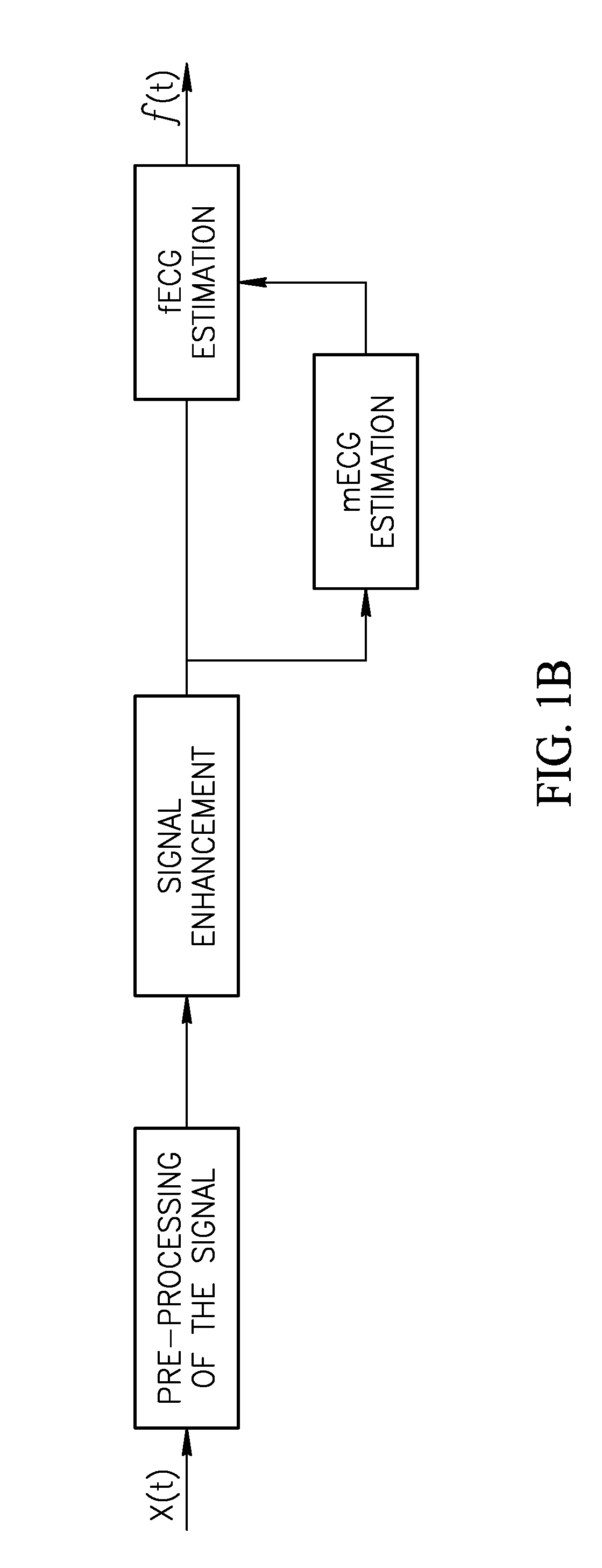Fetal ECG and heart rate assessment and monitoring device
a monitoring device and fetal ecg technology, applied in the field of fetal ecg and heart rate assessment and monitoring devices, can solve the problems of insufficient promising effect of such methods
- Summary
- Abstract
- Description
- Claims
- Application Information
AI Technical Summary
Benefits of technology
Problems solved by technology
Method used
Image
Examples
Embodiment Construction
[0012]Disclosed herein is a method of coupling mechanical pulses of maternal heart contractions, detected with wearable sensors (e.g., in the arm or wrist areas), with maternal ECG signals—which should synchronize with the mechanical pulses—in order to remove a maternal ECG component from combined maternal and fetal ECG signals captured on the abdominal body surface to yield the fetal ECG signals and fetal heart rate. As the peripheral organs of the mother receive blood pumped from the mother's heart only, there should be no fetal mechanical pulse detectable in the maternal arm or wrist areas to confuse the isolation or extraction of fetal ECG signals.
[0013]This mechanical-electrical coupling of maternal cardiac activity as a filter to isolate or extract the fetal ECG is simpler to implement and more precise than existing methods that use rigorous mathematical signal processing to obtain a fetal ECG from a combined maternal fetal ECG signal. With the methods and devices for capturin...
PUM
 Login to View More
Login to View More Abstract
Description
Claims
Application Information
 Login to View More
Login to View More - R&D
- Intellectual Property
- Life Sciences
- Materials
- Tech Scout
- Unparalleled Data Quality
- Higher Quality Content
- 60% Fewer Hallucinations
Browse by: Latest US Patents, China's latest patents, Technical Efficacy Thesaurus, Application Domain, Technology Topic, Popular Technical Reports.
© 2025 PatSnap. All rights reserved.Legal|Privacy policy|Modern Slavery Act Transparency Statement|Sitemap|About US| Contact US: help@patsnap.com



